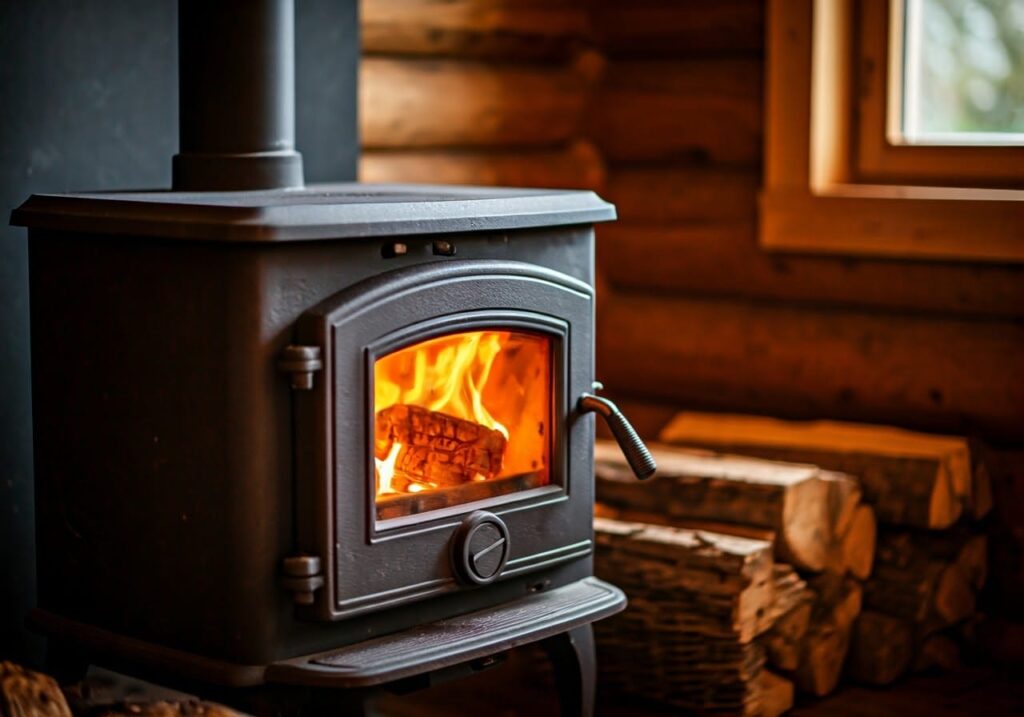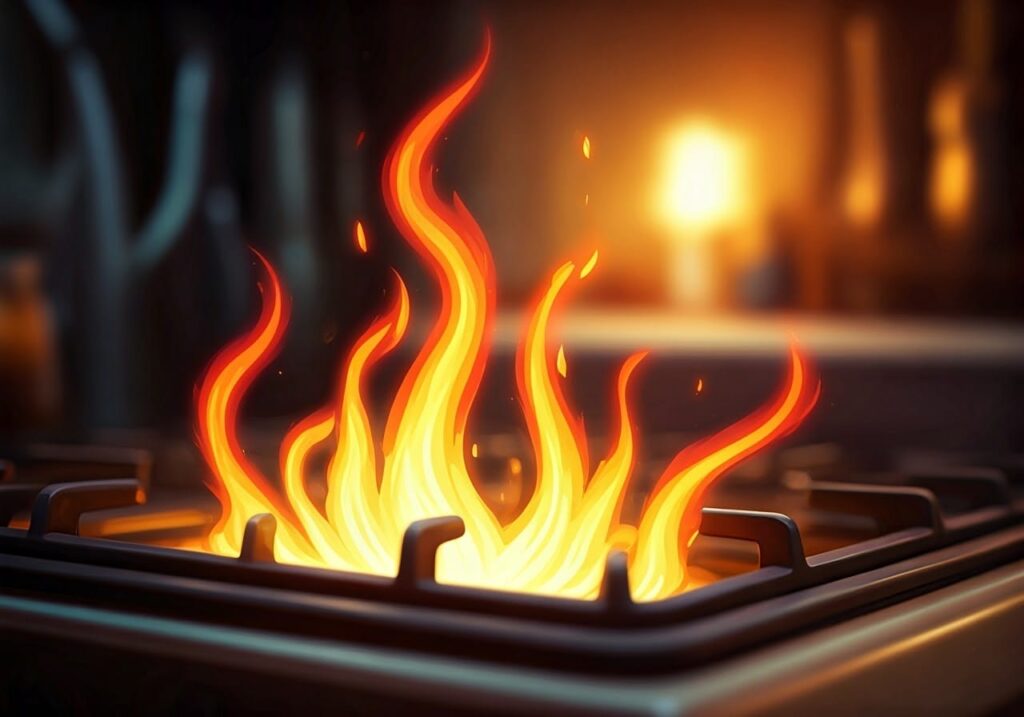
A wood stove baffle might seem like a simple metal plate, but it’s actually one of the most crucial components for efficient wood-burning and heat production. Understanding how this vital component works can help you maximize your stove’s performance and reduce your fuel consumption.
What Exactly Is a Wood Stove Baffle?
A baffle is a carefully designed internal component located near the top of your wood stove’s firebox. This heat-resistant plate or series of plates serves as a partial barrier between the fire and the flue pipe, creating a longer path for exhaust gases to travel before exiting the stove.
Key Functions of the Baffle System
Extended Heat Exchange
- Forces hot gases to take a longer path before exiting
- Increases time for heat transfer to the room
- Improves overall heating efficiency
Temperature Control
- Maintains optimal combustion temperatures
- Protects the stove’s top from excessive heat
- Helps prevent thermal damage to components
Secondary Combustion
- Creates turbulence in exhaust gases
- Promotes complete burning of wood particles
- Reduces smoke and emissions
Why Your Baffle’s Condition Matters

Efficiency Impact
Maintaining your stove’s baffle in top condition significantly boosts its efficiency by 10-15%. This improvement means:
- Reduced firewood usage, saving you time and money
- Consistent and reliable heat output, ensuring your home remains comfortably warm
- Lower heating expenses, contributing to overall household savings
- Minimized environmental impact due to efficient fuel usage
Safety Benefits
The baffle is a critical component for safe stove operation. Its well-being ensures:
- Prevention of overheating, safeguarding both the stove and your home
- Maintenance of proper draft, which is essential for effective combustion and smoke expulsion
- Reduction in creosote buildup, lowering the risk of chimney fires
- Protection of stove components from excessive heat, prolonging their lifespan
Regularly checking and maintaining your baffle not only optimizes your stove’s performance but also ensures a safer and more sustainable heating solution for your home. Prioritizing this often-overlooked aspect of stove maintenance can lead to better efficiency and significant cost savings.
Start paying attention to your baffle’s condition today to enjoy a cozier, safer, and more environmentally friendly living space.
Signs of Baffle Problems
Watch for these warning signs that your baffle might need attention:
Performance Issues
- Reduced heat output
- Difficulty maintaining fire
- Excessive smoke
- Poor fuel efficiency
Physical Signs
- Visible warping or damage
- Cracks in the baffle material
- Debris accumulation
- Missing or fallen pieces
Maintaining Your Wood Stove Baffle
Regular Maintenance Steps
Inspection Schedule
- Check monthly during heating season
- Look for warping or damage
- Clear any debris accumulation
- Verify proper positioning
Cleaning Procedures
- Allow stove to cool completely
- Gently brush off accumulated ash
- Inspect seals and gaskets
- Document any concerns
Professional Service
Have a certified technician:
- Perform annual inspections
- Replace damaged components
- Verify proper installation
- Optimize baffle positioning
Upgrading and Replacement
When to Replace Your Baffle
Consider replacement when you notice:
- Significant warping
- Cracks or holes
- Reduced efficiency
- Age-related deterioration
Choosing a Replacement
Focus on:
- Proper fit for your model
- High-quality materials
- Professional installation
- Manufacturer specifications
Impact on Environmental Performance
A well-maintained baffle helps:
- Reduce particle emissions
- Lower carbon footprint
- Improve air quality
- Meet EPA standards
Expert Tips for Baffle Care
Effective Fire Management
Ensuring your stove’s baffle is in peak condition requires strategic fire management practices:
- Gradual Fire Building: Start with small kindling and gradually add larger logs. This prevents thermal shock and extends the lifespan of your baffle.
- Maintain Proper Temperature: Keep your stove at an efficient burning temperature to maximize heat output and minimize creosote buildup.
- Use Seasoned Wood: Always use well-seasoned firewood with low moisture content to promote cleaner burns and reduce soot formation.
- Monitor Smoke Output: Keep an eye on the smoke exiting your chimney. Clear, almost invisible smoke indicates efficient burning, whereas thick smoke suggests incomplete combustion and potential baffle issues.
Prolonging Baffle Lifespan
Long-term care ensures your stove’s baffle remains effective and safe:
- Avoid Overfiring: High temperatures can warp and damage the baffle. Stick to recommended burning temperatures to avoid overfiring.
- Control Moisture Levels: Properly dry and store your firewood to maintain low moisture content, which is crucial for efficient burning and baffle protection.
- Keep Logs Away from Baffle: Position logs so that they don’t come into direct contact with the baffle to prevent physical damage.
- Monitor Stove Temperature: Use a stove thermometer to keep track of your stove’s operating temperature, ensuring it stays within the optimal range.
By incorporating these expert tips, you’ll enhance the efficiency and safety of your wood stove, ensuring a cozy and sustainable heat source for your home. Make baffle care a priority to enjoy consistent warmth and extended stove life.
Conclusion
Your wood stove’s baffle is more than just a metal plate – it’s a crucial component that affects efficiency, safety, and environmental impact. Regular maintenance and proper use will ensure optimal performance and longevity of both the baffle and your entire wood stove system.
Key Takeaways
- Regular inspection is essential
- Proper maintenance extends lifespan
- Professional service ensures safety
- Efficiency depends on baffle condition


